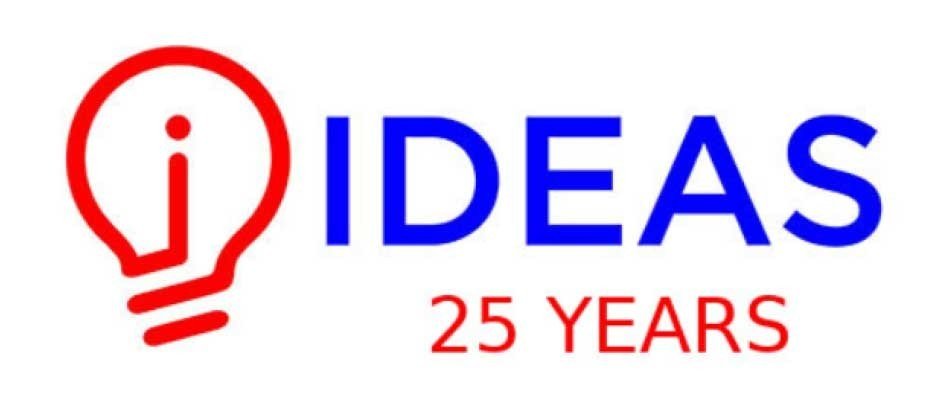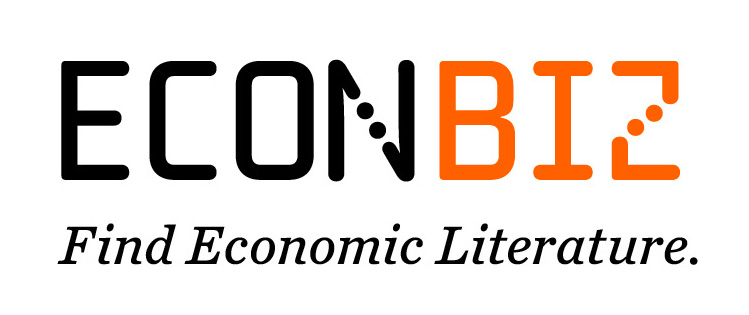| ISSN | 2615-9813 |
| ISSN (số cũ) | 1859-3682 |
Số 226 | Tháng 01/2025
Hành vi lãnh đạo và hiệu quả công việc của nhân viên các ngân hàng thương mại: Vai trò trung gian của hành vi đổi mới
Nguyễn Duy Khánh, Hoàng Thị Thanh Hằng
Tóm tắt:
Nghiên cứu này khám phá mối quan hệ giữa hành vi lãnh đạo (HVLĐ), hành vi đổi mới của nhân viên và hiệu quả công việc (HQCV) tại các ngân hàng thương mại (NHTM) trên địa bàn Thành phố Hồ Chí Minh (TP. HCM). Từ 650 bảng câu hỏi phát ra, 561 bảng câu hỏi hợp lệ đã được phân tích bằng các kỹ thuật thống kê như SPSS và AMOS, bao gồm phân tích nhân tố khám phá, phân tích nhân tố khẳng định và mô hình phương trình cấu trúc. Kết quả nghiên cứu chỉ ra rằng HVLĐ có tác động trực tiếp và cùng chiều đến HQCV. Đặc biệt, tác động này càng đáng kể khi hành vi đổi mới của nhân viên đóng vai trò trung gian, giúp biến những ý tưởng sáng tạo thành hành động thiết thực. Ngoài ra, HVLĐ cũng đã được chứng minh là một yếu tố thúc đẩy hành vi đổi mới, tạo điều kiện cho nhân viên hiện thực hóa các sáng kiến mới. Nghiên cứu không chỉ mở rộng sự hiểu biết về vai trò của HVLĐ trong việc cải thiện HQCV mà còn nhấn mạnh đến nhu cầu khuyến khích đổi mới trong các tổ chức. Những phát hiện này có ý nghĩa quan trọng đối với các nhà quản lý và lãnh đạo ngân hàng trong việc xây dựng môi trường làm việc linh hoạt, tăng cường năng lực đổi mới và cải thiện hiệu quả tổ chức, đặc biệt là trong bối cảnh cạnh tranh ngày càng gia tăng.
Tài liệu tham khảo:
- Alam, M.K., Islam, F.T. and Runy, M.K. (2021), "Why does Shariah governance framework important for Islamic banks?", Asian Journal of Economics and Banking, Vol. 5 No. 2, pp. 158-172. https://doi.org/10.1108/AJEB-02-2021-0018.
- Al-gattan, A. A. (1983). The path-goal theory of leadership: an empirical and longitudinal analysis. Arizona State University.
- Battistelli, A., Montani, F., & Odoardi, C. (2013). The impact of feedback from job and task autonomy in the relationship between dispositional resistance to change and innovative work behaviour. European Journal of Work and Organizational Psychology, 22(1), 26-41.
- Burns, J. M. G. (1978). Leadership. In Harper torchbooks. Harper and Row.
- Scott, S. G., & Bruce, R. A. (1998). Following the leader in R&D: The joint effect of subordinate problem-solving style and leader-member relations on innovative behavior. IEEE Transactions on Engineering Management, 45(1), 3-10.
- De Jong, J., & Den Hartog, D. (2010). Measuring innovative work behaviour. Creativity and innovation management, 19(1), 23-36.
- Graen, G. B., & Uhl-Bien, M. (1995). Relationship-based approach to leadership: Development of leader-member exchange (LMX) theory of leadership over 25 years: Applying a multi-level multi-domain perspective. The leadership quarterly, 6(2), 219-247.
- Gumusluoglu, L., & Ilsev, A. (2009). Transformational leadership, creativity, and organizational innovation. Journal of business research, 62(4), 461-473.
- Hair, J. F., Black, W. C., Babin, B. J., & Anderson, R. E. (2010). Multivariate Data Analysis (7th Edition). NJ: Prentice Hall.
- Harris, L. C., & Ogbonna, E. (2001). Leadership style and market orientation: an empirical study. European journal of marketing, 35(5/6), 744-764.
- House, R. J. (1971). A path goal theory of leader effectiveness. Administrative science quarterly, 321-339.
- Bùi Quang Hùng (2023). Lãnh đạo chuyển đổi, năng lực đổi mới và hiệu quả hoạt động của doanh nghiệp. Tạp chí nghiên cứu Kinh tế và Kinh doanh Châu Á.
- Iqbal, Q., & Piwowar-Sulej, K. (2023). Sustainable leadership and heterogeneous knowledge sharing: the model for frugal innovation. European Journal of Innovation Management, 26(7), 655-673.
- Janssen, O. (2000). Job demands, perceptions of effort‐reward fairness and innovative work behaviour. Journal of Occupational and organizational psychology, 73(3), 287-302.
- Jung, D. I., Chow, C., & Wu, A. (2003). The role of transformational leadership in enhancing organizational innovation: Hypotheses and some preliminary findings. The leadership quarterly 14(4-5), 525-544.
- Kaptein, M. (2011). From inaction to external whistleblowing: The influence of the ethical culture of organizations on employee responses to observed wrongdoing. Journal of Business Ethics, 98, 513-530.
- Khajehpour, M., Sedaghatparast, E. and Rabieh, M. (2022), "Designing a comprehensive model of organizational resilience in the banking industry of Iran", Asian Journal of Economics and Banking, Vol. 6 No. 1, pp. 69-87. https://doi.org/10.1108/AJEB-01-2021-0011.
- Khan, J., Saeed, I., Ali, A., & Nisar, H. G. (2021). The mediating role of emotional exhaustion in the relationship between abusive supervision and employee cyberloafing behaviour. Journal of Management and Research, 160-178
- Lukes, M., & Stephan, U. (2017). Measuring employee innovation: A review of existing scales and the development of the innovative behavior and innovation support inventories across cultures. International Journal of Entrepreneurial Behavior & Research, 23(1), 136-158.
- Mitchell, T. R., & Scott, W. G. (1987). Leadership failures, the distrusting public, and prospects of the administrative state. Public Administration Review, 445-452.
- Mumford, M. D., & Licuanan, B. (2004). Leading for innovation: Conclusions, issues, and directions. The Leadership Quarterly, 15(1), 163-171.
- Nguon, V. (2022). Effect of transformational leadership on job satisfaction, innovative behavior, and work performance: A conceptual review. International Journal of Business and Management, 17(12), 75-89.
- Nguyen, T.D., Cao, T.H., Nguyen, T.M. and Nguyen, T.T. (2024), "Psychological capital: a literature review and research trends", Asian Journal of Economics and Banking, Vol. 8 No. 3, pp. 412-429. https://doi.org/10.1108/AJEB-08-2023-0076.
- Ojokuku, R., Odetayo, T., & Sajuyigbe, A. (2012). Impact of leadership style on organisational performance: A case study of Nigerian banks. American Journal of Business and Management, 1(4), 202-207
- Olwan, A., Irtaimeh, H., & AL-Lozi, M. (2019). Strategic Leadership Competencies and its Impact on Achieving Organizational Excellence via the Mediating Role of Organizational Commitment: A Case Study in National Center for Security and Crisis Management (NCSCM). Journal of Social Sciences (COES&RJ-JSS), 8, 106-138.
- Organ, D. W., & Konovsky, M. (1989). Cognitive versus affective determinants of organizational citizenship behavior. Journal of applied psychology, 74(1), 157.
- Shalley, C. E., & Gilson, L. L. (2004). What leaders need to know: A review of social and contextual factors that can foster or hinder creativity. The leadership quarterly, 15(1), 33-53.
- Silverthorne, C. (2001). A test of the path‐goal leadership theory in Taiwan. Leadership & Organization Development Journal, 22(4), 151-158.
- Stevens, J. M., Beyer, J. M., & Trice, H. M. (1978). Assessing personal, role, and organizational predictors of managerial commitment. Academy of management journal, 21(3), 380-396.
- Tannenbaum, R., Weschler, I. R., & Massarik, F. (1961). Leadership and organization: A Behavioural science approach. In Leadership and Organization: A Behavioural Science Approach (1st Edition, 27). Taylor and Francis
- Tepper, B. J., Henle, C. A., Lambert, L. S., Giacalone, R. A., & Duffy, M. K. (2008). Abusive supervision and subordinates’ organization deviance. Journal of Applied Psychology, 93(4), 721.
- Trần Nguyễn Hoàng Quân (2020). Organisational culture, leadership behaviour and job satisfaction in the Vietnam context. International Journal of Organizational Analysis, 29(1), 136-154.
- Wang, Z., Liu, Y., & Liu, S. (2019). Authoritarian leadership and task performance: the effects of leader-member exchange and dependence on leader. Frontiers of Business Research in China, 13(1), 1-15.
- Wang, Z., Sun, C., & Cai, S. (2021). How exploitative leadership influences employee innovative behavior: the mediating role of relational attachment and moderating role of high-performance work systems. Leadership and Organization Development Journal, 42(2), 233-248.
- Yousef, D. A. (2000). Organizational commitment: A mediator of the relationships of leadership behavior with job satisfaction and performance in a non-western country. Journal of Managerial Psychology, 15(1), 6-24.
- Yuan, F., & Woodman, R. W. (2017). Innovative Behavior in the Workplace: The Role of Performance and Image Outcome Expectations. Academy of Management Journal, 53(2), 323-342.
- Yukl, G. (2008). How leaders influence organizational effectiveness. The leadership quarterly, 19(6), 708-722.
- Zhu, C., & Zhang, F. (2020). How does servant leadership fuel employee innovative behavior? A moderated mediation framework. Asia Pacific Journal of Human Resources, 58(3), 356-377.
Leadership Behaviour and Job Performance of Commercial Bank Employees: The Mediating Role of Innovative Behaviour
Abstract:
This study investigates the relationship between leadership behaviour, employee innovative behaviour, and job performance in commercial banks in Ho Chi Minh City. A total of 650 questionnaires were distributed, with 561 valid responses analyzed using statistical techniques, including exploratory factor analysis (EFA), confirmatory factor analysis (CFA), and structural equation modelling (SEM) via SPSS and AMOS. The findings indicate that leadership behaviour has a direct and positive impact on job performance. This effect is significantly enhanced when employee innovative behaviour serves as a mediator, enabling the transformation of creative ideas into practical actions. Additionally, leadership behaviour has been shown to foster innovation, encouraging employees to generate and implement new initiatives. By expanding the understanding of leadership behaviour’s role in enhancing job performance, this study underscores the importance of fostering innovation within organizations. The findings provide valuable insights for bank managers and leaders, emphasizing the need to cultivate a flexible and innovation-driven work environment to strengthen organizational performance, particularly in an increasingly competitive banking sector.







